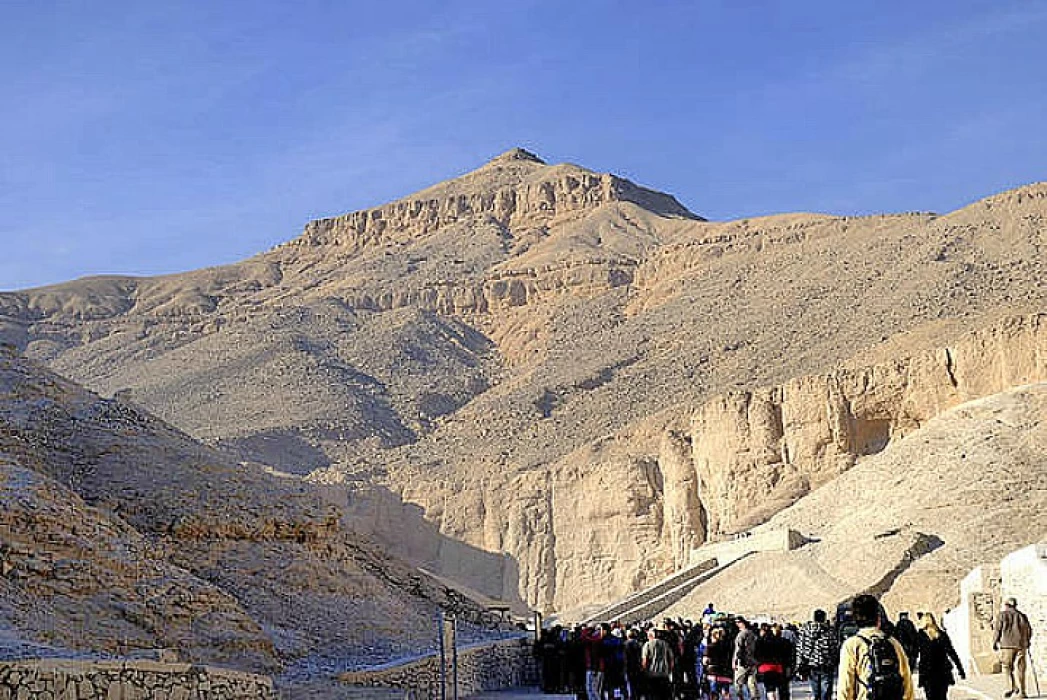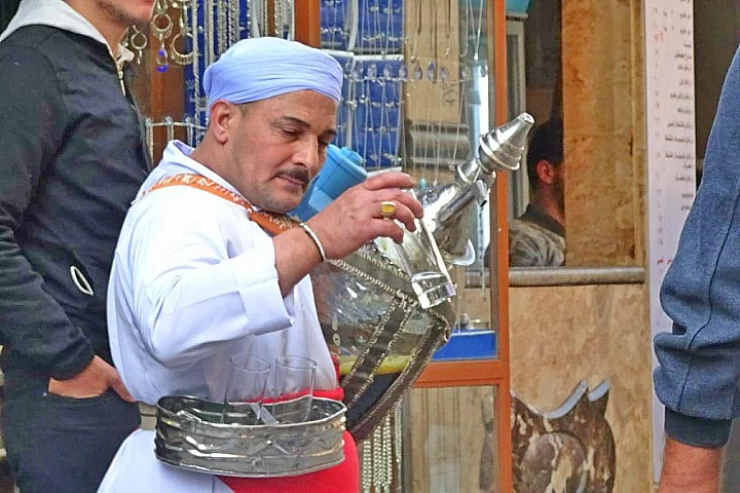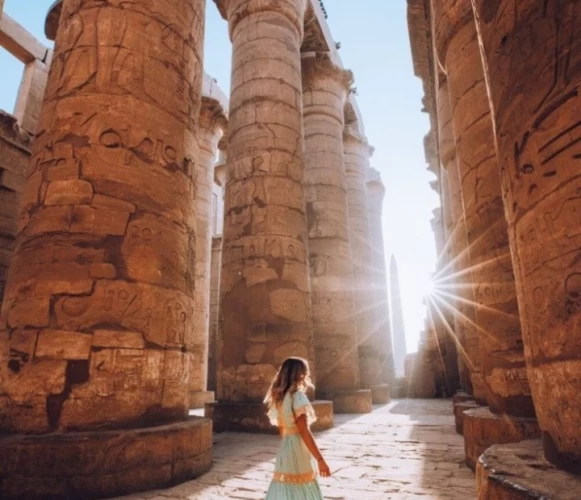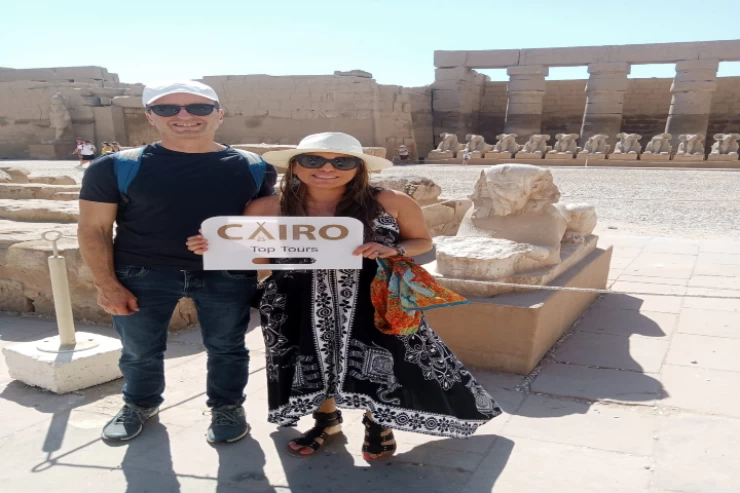
Valley of the Nobles
Valley of the Nobles in Luxor
The Valley of the Nobles groups three tombs; Cheikh Abd el-Gournah, Assassin, and El Khokkah. The tombs of the nobles stand out from the royal tombs for their architectural simplicity and for their decorative elements inspired by the daily life of Ancient Egypt.
Located in a large area in the south of the Valley of the Kings, near the hillside village of Quma, there are about 400 noble and high-ranking tombs, mostly from the New Kingdom.
Only a part of the tombs are open to the public, the most important among them all is around 13. The tombs are divided into five groups, belonging to five areas. To access the tombs you need a ticket, to be purchased in advance at the West Bank ticket office.
While the tombs of the pharaohs were hidden in an isolated valley, those of the dignitaries The interior of Userhat's tomb is closer to the surface of the hills facing the Nile and all have a rich decoration, which testifies to the activities of the daily life of 4500 years ago.
Since the limestone of the area is of poor quality, the tombs are painted and the carved reliefs are very few. The suggestive images that adorn the walls offer us an invaluable testimony of everyday life in ancient Egypt.
Group 1: The tombs of Khonsu (n. 31), Userhat (n. 51), and Benia (n. 343)
The group of three tombs is located 90 m east of the previous ones. Khonsu was one of the advisers of Thutmose III, his tomb is decorated with painted reliefs, many of which have unfortunately deteriorated.

God Khonsu | God of the Moon
Group 2: The Tombs of Nakht (n. 52) and Menna (n. 69)
The Egyptologists say that these two tombs, belonging to the reign of Amenhotep III, are the work of a single artist. Both show rural life scenes illustrating plowing, planting, and harvesting, as well as hunting and fishing scenes.
Group 3: The tombs of Ramose ( n.55 ), Userhat ( n.56 ), and Hkaemhat ( n.57 )
Located north of Ramesseum, behind a small alabaster manufacturer, the three tombs are close to the main road. Ramose was governor of Thebes and vizier during the reigns of Amenhotep III and Akhenaten. His grave is the largest of all and contains a hypostyle hall supported by several columns. Only one wall is painted: it reproduces the funeral of the deceased, with the processional procession where the bearers bearing the funeral outfit stand out.
Group 4: The tombs of Sennefer (n. 96) and Rekhmira (n. 100)
They are two very elegant tombs, of a different design from the others. Sennefer was a court dignitary at the time of Amenhotep II, very much in love with his wife: on the four pillars that support the carve carved out of the rock, the couple is reproduced no less than 14 times, in affectionate attitudes.
Group 5: The tombs of Neferrenpet (178), Djehutimes (295) and Nefersekheru (296)
To the east of the tomb of Menna (69), not far away are these three burials which are probably the least relevant among the Tombs of the Nobles, also if they still have beautiful ceilings decorated with geometric patterns.
And I can't miss the tomb of Nefertari, the internal configuration room on the left inside the tomb includes the southern and northern gods and is painted in the form of snakes. On the wall, you will find engravings of Lamisti and Dawamut F, while they are preparing a dwelling for Queen Nefertari in the Holy Land. On the right wall of the room, you will find a drawing of Horus, and on the back wall, drawings of the names and titles of the queen, with inscriptions of Thoth holding a pillar on which to lean.
Latest Articles
Admin
Seabourn Sojourn Cruise Stops in Safaga Port
The Seabourn Sojourn, the flagship vessel of Seabourn Cruise Line's ultra-luxury fleet, was built in 2008 at the T. Mariotti shipyard in Genoa, Italy. Measuring 198 metres, it can accommodate up to 450 guests in its 225 spacious all-suite staterooms.
Admin
Norwegian Sky Cruise Stops in Safaga Port
Norwegian Cruise Line operates a cruise ship called the Norwegian Sky. It was constructed in 1999 and can accommodate 2,004 passengers in addition to 878 crew members. The ship has several dining establishments, lounges and bars, a spa and fitness center, swimming pools, and a number of entertainment areas.
Admin
Explora II Cruise Stops in Safaga Port
Explora II, the second vessel in the Explora Journeys fleet, sets sail in 2024 to redefine luxury cruising. With 461 ocean-front suites, 9 culinary experiences, and 4 pools, this haven of sophistication and sustainability promises an unforgettable "Ocean State of Mind" journey to inspiring destinations.
Admin
Mein Schiff 6 Cruise Stops in Safaga Port
The Mein Schiff 6 is the latest cruise ship in the renowned TUI Cruises fleet, offering passengers a luxurious and sophisticated cruise experience. At 315 metres long, this floating resort features a range of dining options, entertainment, and recreational facilities, including a spa, fitness centre, and sports amenities.
Admin
Mein Schiff 4 Cruise Stops in Safaga Port
When the Mein Schiff 4 cruise ship docks in Safaga, Egypt, passengers are granted access to a realm of ancient wonders. Aboard this state-of-the-art vessel, guests can embark on meticulously curated shore excursions that showcase the region's most iconic landmarks, including the Giza Pyramids, the enigmatic Sphinx, and the remarkable tombs and temples of the Valley of the Kings in Luxor.
Admin
MS Europa Cruise Stops in Safaga Port
The Silver Moon, Silversea's latest flagship, is a luxury cruise ship that offers an exceptional travel experience for Venezuelans exploring Egypt. With a capacity of 596 guests and an impressive 40,700 gross tonnes, the Silver Moon maintains the small-ship intimacy and spacious all-suite accommodations that are the hallmarks of the Silversea brand.

























